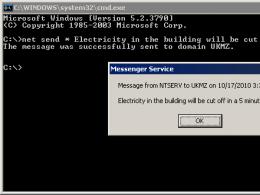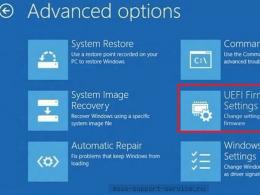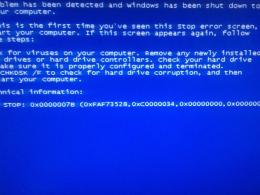Do-it-yourself portable speaker case. Do-it-yourself portable speaker in just a couple of days
This review dedicated to miniature 40mm speakers that I used in a homemade column. I must say right away that the speakers met my expectations as tweeters and, together with the low-frequency ones, they gave quite acceptable sound for a fairly compact speaker.
It all started with a miniature subwoofer that came with ASUS laptop N55S

I used it quite rarely, but despite this, the 2.5 "connector on the laptop, to which this speaker was connected, began to contact badly and finally just fell into the laptop. I did not see any particular need for repair, since the laptop was used mainly for work and didn't really need good bass.
But the idea to use this speaker as a portable miniature speaker has been sitting in my head for a long time. Unfortunately, it was problematic to fit something other than this speaker into that case, so I decided to change the speaker case.

At first I wanted to build a speaker on a pair of half-watt speakers from old computers. 
Their diameter was too big, and the sound was simply disgusting. Repulsively creaking, and a little more volume - then strongly rattling. Woofer did not pull out the sound quality. Something else was needed. And on the Internet I found the speakers from the review.
I bought them on EBAY, although it was possible on ALI and TAO:
Declared characteristics
- Diameter - 40mm
- Height - 20mm
- Magnet diameter - 22mm
- Rated power - 3W
- Resistance - 4ohm
- Frequency range - 170KHz
- The coefficient of non-linear distortion - 1%
Components Used
- 3W 4 ohm 40mm speakers in above link $1.9 x 2 = $3.8
- Case (remained from another project), if I bought it, I would take it without a transparent cover 115x90x55 in size
- - $0.99 for 2 pieces
- ~ $0.5
- Woofer 5 W 4 ohm
- Battery from a faulty phone at 2200mAh

The size is smaller than from speakers from computer cases.
Therefore, a 120x80x55 mm instrument case lying idle with a transparent cover came up, which is absolutely unnecessary in this product.

Dimensions correspond to the declared



Weight 25g (maybe someone with TAO will order) 
The resistance is also quite good. 
All speakers included 
Miniature amplifier boards on PAM8403 
Charging boards lithium batteries with 600mA current on TP4056 (current can be adjusted up to 1A) 
The initial test of the speakers led to a slight rattle at maximum volume, so I installed a volume divider and a high-pass filter on a 0.1mKF capacitor at the input
The final scheme turned out like this 
We cut holes in the case for the speakers, button and MiniUSB connector 

We glue the speakers, install the board, solder the battery 
We connect to the phone. 
Can close the case 
Well, what about the sound? The quality was a pleasant surprise. For such a small rattle, the sound is very loud and high quality. The sound can be slightly corrected by the equalizer in the phone / tablet / computer. There is bass, normal highs.
Consumption of 150mA at maximum volume, that is, approximately 0.5 watts. With a battery capacity of 2200mAh, it will be enough for 12-20 hours, depending on the volume. You can also from the network through any power supply unit with a USB connector or a computer.
The column suits us just fine. 
The Chinese would boldly write HiFi on it))) 
Just a little more work to do appearance. I close the speakers with a grid for windows. 
And I paste it with a “carbon-like” film that was lying around somewhere in the closet. And here is the finished product, the fruit of several evenings.

Improve in the future this column volume control, battery indicator and replace the line input with a bluetooth module (or FM/MP3/USB)
Read about all my crafts in
Hello to all DIYers! Once I saw a broken portable MP3 speaker in a friend's garage. Says the son “repaired”, was going to throw it away. There were no entrails, power, batteries the same, but I really liked the wooden case, and the speakers seemed to be intact. I decided to reanimate it - to take it with me to the forest for picnics.
And then the work began to boil, for the source he took a Chinese mp3 module for 200 rubles.

I took a 7.4 volt 1200 mA battery from the quadcopter, the quad no longer pulled, but just right for this project. The amplifier was taken from a computer speaker on a TDA2282 chip - a good and proven 1-watt stereo chip. ULF scheme below.
Amplifier circuit

I removed the variable from the board, the headphone jack, replaced the output capacitors 1000 uF, put 0.22 uF + 33 kΩ resistor at the input, since its sensitivity is very strong. I connected it to the battery and the module - everything played perfectly.



Instead of the front panel, I cut out a plate from fiberboard and glued it with black self-adhesive. I fixed a suitable 11 volt transformer on the back wall, fixed the battery, brought the balancing connector for charging out - I will charge with stock charger from a quadcopter. From the battery and transformer, power is supplied to the device through diodes so that there is no dependence. The LEDs for the backlight were burned, I put in other multi-colored ones, from lighters. During the assembly process, glue from a thermal gun was used.


I liked the sound: loud, powerful, the most suitable for nature. I tested it for the duration of work at medium volume - the device played continuously for 4 hours, then distortions appeared, and although I didn’t read mp3 anymore, the radio still worked. The battery voltage was 4.8 V.
Sometimes there is a need to voice an event where there is no 220 volt power supply, for example, in the forest or on a walk, and if for two people the volume of the phone can still be enough, then for a company of 3 or more people, a higher volume is definitely needed. Recently I was putting things in order in my stocks of radio components and other related things, I came across two used batteries from mobile phones. The idea immediately arose to collect something that I had been planning to do for a long time, but could not find the time: a portable speaker for an mp3 player, or cell phone with an input from the plug "Jack 3.5".I must say right away that the device works fine with both the phone and the player. It was decided, of course, to solder the amplifier on a microcircuit, the search for the right one took a little time, I read reviews on the Internet and settled on tda2822m. The microcircuit has only 8 legs, the execution is in a Dip package. Then I downloaded the datasheet for this microcircuit, there were 2 options for connecting the microcircuit - in stereo mode and in bridge mode, the latter is of interest to us, since there will be only one speaker. In addition to the wiring diagrams, there were also PCB layout options. Here is the diagram we need:
Diagram of a homemade portable speaker

Then, as usual, we print, transfer the drawing to the printed circuit board and etch. After we tin the tracks, drill and start soldering. The microcircuit, in order not to accidentally overheat, did not solder, but soldered the socket, and put the microcircuit in this socket after soldering. The cost of a microcircuit in our city is only 15 rubles. Then I faced the task of how to make it possible to charge both batteries at once from a mobile charger, that is, so that they are connected in parallel, and later they can be switched on in series for more high volume columns. Then it was developed using a 6-pin on-off toggle switch, the charge switching circuit - work:

Power is supplied by connecting the charging plug to the speaker socket; with discharged batteries, you need to charge for an hour and a half. There is no overcharge protection circuit, you will have to control the charging time by eye. The volume is adjusted on the phone or on the player, if anyone wants to put a volume control on the speaker, then this can be done without problems, it is enough to apply a signal to the right contact of a variable resistor with a resistance of 10-50 KΩ, to the left contact to ground, and connect the central one to the film input capacitor.

To connect to the player, I used one channel of the cable from the headphones, and the veins from that cable, due to the fact that they are very thin, did not solder directly to the board, but extended them with thinner flexible copper wires and soldered them into the board already. I fixed these wires on the cable with electrical tape. The speaker took a power of 2 W with a resistance of 8 ohms, wheezing and distortion, except at maximum volume, is not observed. On the player, it is enough to set a maximum of 10 divisions out of 32 to 3, and the volume will be enough. You can see a photo of the finished device and several photos taken at the assembly stage in the article.

To save battery power, I installed a second toggle switch - a power switch. In general, the device of a home-made portable speaker turned out to be simple and any novice radio amateur can repeat it. Author - AKV.
Discuss the article PORTABLE SPEAKER OWN HANDS
For computer user A laptop is undoubtedly a convenient, compact and quite functional device. But, unfortunately, this device is not without flaws.
Surely, many users of laptops and netbooks have encountered the problem of quiet sound reproduction through the built-in speakers of these devices.
If at home you can connect an external stereo system, then outside the home walls it is impossible and you have to limit yourself to headphones. In this case, there is no talk of collective viewing of any film or series.
How to fix the situation?
Portable computer speakers powered by USB port. Now on the shelves of stores there is a huge selection of these devices, but their quality can vary significantly.
The price of portable computer speakers powered by a USB port is quite low and affordable for a wide segment of the population. Despite this purchase this device may be unsuccessful, since the quality of sound reproduction by such a system leaves much to be desired. Oddly enough, but among the cheap devices of this class there are devices of very good quality, both in design and in sound reproduction quality.
We will “open” a portable speaker system powered by a USB port and study the electronic filling of this device. From the point of view of a radio amateur, it is curious to know what electronic components such devices are assembled from. The knowledge gained can come in handy when building USB-powered portable speakers or repairing them yourself.
We will disassemble portable multimedia USB speakers of the brand Sven 315. Despite their cheapness, this model portable speakers showed good quality reproduction and sound power sufficient for scoring a small room.


Disassembly of computer USB speakers
Portable speakers are easy to disassemble. To open the case, carefully remove the front decorative panel.


In order to get the printed circuit board of the amplifier, it is necessary to unscrew the fixing nut, which is hidden under the plastic knob of the volume control. Thereafter electronic board can be freely removed from the case.
Electronic stuffing
The composition of the electronic filling of the device turned out to be quite simple. On a small printed circuit board, an integrated circuit of a stereo amplifier based on a microcircuit is mounted. LM4863D. With a supply voltage of 5 volts, this microcircuit can produce 2.2 watts of output power per channel with a speaker voice coil resistance of 4 ohms. Based on the description (datasheet) THD + noise ( THD+N) at maximum output power is 1%.

Amplifier board and speaker
Based on these data, we can conclude that based on the LM4863D chip, you can assemble a pretty good stereo amplifier with low-voltage power supply (5V) and output power of 2 W per channel. Many who are not yet familiar with modern microcircuits believe that TDA2822 is suitable instead of LM4863D. It's a delusion! TDA2822 is very gluttonous (compared to LM4863) and produces strong signal distortion at maximum power. Also, the optimal power supply for the TDA2822 is about 12 volts, which is not good for portable equipment. The TDA2822 can be recommended as a readily available replacement if the LM4863 is not available. This can happen, for example, during repairs.

It is worth noting that the LM4863 chip was developed specifically for compact systems, so the chip requires a minimum external elements(the so-called binding). The microcircuit is produced in different buildings, from the familiar DIP to the compact SOIC.
If there is a desire to independently assemble an amplifier based on the LM4863 chip, then you may encounter a problem. Finding this chip on the radio markets is not so easy (as it was at the time of this writing). But it was not difficult to find such a microcircuit on online trading platforms. For example, in the AliExpress.com online store, the LM4863 chip is easy to find in various cases and in any quantity. The price of 1 microcircuit is less than $1, if you buy 10 pieces at once.
How to buy radio components on Aliexpress, I told.

In addition to the amplifier chip itself, the printed circuit board has a connector for connecting a passive speaker (without a built-in amplifier), a dual variable resistor for adjusting the input audio signal and an electrolytic capacitor. On the side of the printed conductors of the circuit board are installed SMD elements bindings that are necessary for the operation of the integrated amplifier. The microcircuit is powered from the USB connector, which is connected to any free port of a laptop or desktop computer.
A typical connection diagram for the LM4863 chip is taken from the description (datasheet "a) for this chip and is shown in the figure.

Typical circuit for switching on the LM4863 chip (taken from the description)
According to the typical circuit for switching on the LM4863 chip, it can be seen that it is able to work on regular headphones (headphone), the resistance of which is 32 ohms. The microcircuit provides a circuit for determining the connection of headphones, and pin 16 (HP-IN) is assigned to implement this function.
For those who understand electronics and datasheets on English language they are not afraid, LM4863 chips can easily be found on the Internet at alldatasheet.com.
Portable USB speaker amplifier circuit
The schematic diagram of the amplifier is reduced manually from printed circuit board computer USB speakers Sven-315. The diagram shows one capacitor C2 instead of two (C7,C9) that are actually present on the PCB (see below). This is because on the PCB the capacitors are connected in parallel (C7 and C9), and in the reduced circuit, the capacitor C2 indicates the total capacitance of these two capacitors.

Schematic diagram of an amplifier based on the LM4863D (hand-mixed)
As we see, typical scheme from the description differs from the one that is manually reduced from the printed circuit board of the amplifier of computer speakers. There are no elements on the diagram that are installed if a headphone jack is added to the circuit. Otherwise, the circuit corresponds to the typical one given in the description for the LM4863 chip.

Placement of elements on the printed circuit board
If you plan to use portable speakers without a laptop, for example, in conjunction with an MP3 player, then a 5-volt power adapter is quite suitable to power the speakers. The main thing is that the power adapter can provide sufficient load current (as a rough estimate: the standard load current for USB ports is no more than 500 mA). According to the description for the LM4863 microcircuit, the maximum quiescent current (when the microcircuit is not supplied sound signal) is 20 mA. Naturally, during playback, the current consumption will be higher.
The photo shows the option of powering SVEN-315 portable speakers from a 5-volt adapter, which is used to charge the iPod player. The maximum load current of the adapter is 1A, which is more than enough for the regular operation of portable speakers.

As it turned out, high-quality sound reproduction of SVEN-315 portable speakers lies in the rational design of the case. As you know, the quality of sound acoustic systems affect not only the loudspeakers used in them, but also the cabinet. To verify this, just pull the speaker out of the case and turn on playback. Quality and sound power playback will be much worse. This remark was not made by chance, since we compared the sound reproduction quality of SVEN-315 portable speakers and similar, but more expensive SVEN PS-30 USB speakers.
Despite the fact that sound speakers SVEN PS-30 are mounted on the basis of an integral USB audio CM6120-S chip, which includes a 16-bit DAC and class D sound amplifiers, the quality of their sound reproduction is subjectively (by ear) much worse due to the poor performance of the speaker cabinet.
The housing of SVEN-315 portable speakers is made of ABS plastic. Perhaps it is the design of the case that allows you to “squeeze out” all their modest capabilities from small-sized speakers.
Increasingly in modern life We use a variety of portable gadgets. But more often than others, gadgets related to music playback are used. It is very convenient, when relaxing in nature or in the country, cycling or exercising in the gym, turn on your favorite work and enjoy high-quality sound. In this regard, portable speakers and boomboxes are very popular among many. Their cost varies from a few dollars to several hundred.
But some don't want to post Nth amount for such a simple device and are wondering how to make a portable speaker with your own hands.
In this article we will talk about several options for its manufacture.
Before starting work, prepare necessary materials, tools and equipment.
To make a portable speaker with your own hands you will need:

When working with these tools, do not forget about the observance of safety regulations.
Do-it-yourself portable speaker case
Let's start with making the case. The sound quality of the speakers largely depends on the material of the case. Plywood is the best suited for these purposes, because it resonates well and, thanks to this, the sound is juicy, rich and with good bass. By simply shoving the speakers in cardboard box never get this quality sound, like from a plywood case. Case dimensions 180 x 70 x 60 mm. These are the optimal proportions for the best sounding speakers. We mark the plywood and cut everything out with a jigsaw. Drill holes for speakers. We clean the edges with sandpaper. We glue all the parts with PVA glue, except for the front part with holes for the speakers. On it we drill holes for the volume control and the switch. We make holes for the micro-USB connector and the audio output wire. We cut out small squares from plywood (1 x 1 cm) and glue them in the corners of the case for further fastening the lid.
Assembly
Solder the wires to the battery and insulate it with electrical tape. Solder the wires to the speakers. Please note that one contact is "+" and the other is "-". Keep this in mind when connecting. We attach the cover, fix it with adhesive tape and drill holes with a diameter of 2.5 mm at the corners. We cut the thread with an M3 tap.

The whole body is well polished with sandpaper. Carefully remove dust and paint. After the paint has dried, glue the speakers with hot glue. We screw the amplifier into the hole made earlier. Attach the switch. Solder the battery wires to the charge controller board in the places marked B+ and B-. Be careful not to reverse the polarity. At this stage, you can check the operation of the circuit by connecting a wire that indicates that the charge is in progress. The blue LED will light up when the battery is fully charged. We solder the plus from the right speaker to the ROUT + contact, and the minus to the ROUT-. Similarly, solder the left speaker to the "LOUT" contacts. We solder the wires to the charge controller board with the “OUT +” and “OUT-32,” contacts. The module is glued with hot glue. We fix the battery. We pass the wire with the audio output into the hole made earlier. To protect against breakage, we tie a knot on it from the inside. Solder the wires coming out of the wire. Solder the remaining contacts to the switch and amplifier. We fasten the front panel with M3 bolts.
We connect the audio connector to the phone and check. Portable speaker ready for the phone with your own hands. It's not too hard, especially if you're tech savvy.
We go further. We will assemble the next portable model from improvised means. As a basis, we will use a case with a speaker from a broken computer speaker and some materials purchased on AliExpress.
In addition, we will need:
- Decoder board (with its help, music will be played not only from a USB flash drive, but also from SD cards, and from a phone).
- Power controller for Li-ion batteries.
- Amplifier pam8403.
- Battery.
- 2 LEDs.
- 2 resistors for 220 kOhm.
- 2 switches.
- Wires, including a wire with an audio output.
- 1 variable resistor of 5 kOhm.
- Soldering accessories.
Circuit Assembly
First, we solder the entire circuit, except for the input for the minijack and the button, so that it would be more convenient to insert it into the case later. We use Philips 1050 mA battery. The consumption of the used board is about 100 mA, so the battery will last for about 10 hours of operation.

Solder the power controller to the battery. After that, through the switch, solder the wires from the power controller to the decoder board. We repeat the connection with the amplifier. We solder the LED to the decoder board, and the LED to the amplifier board, passing through a 10 kΩ resistor. Don't forget about polarity. Now solder the resistors. They are needed so that during playback there are fewer wheezing and extraneous sounds. We connect the board to the amplifier and start them one by one. If the LEDs light up and it turns out to reproduce the sound, then the circuit is assembled correctly.
Now you can solder a variable resistor to control the volume. We check. Turn on the power board and amplifier and turn the volume control.
Assembling the body
At the next stage, we will assemble the circuit and the body of the portable speaker with our own hands. We parse the column. Unsolder the groove of the wire holder. We drill a hole in the case for a minijack with a diameter of 3.5 mm. We make holes for the LEDs, volume control, buttons and USB connector. We glue the decoder board inside the case. Before attaching the buttons, we solder the native buttons of the decoder board with a soldering iron or a building hair dryer. We check the operation of the column and assemble the case. Your handmade portable speaker is ready.

If you are the owner of golden hands and a bright head, then this article will definitely come in handy for you. You can make your own DIY portable speaker for three times less than it costs in the store. And enjoy it while doing it.






